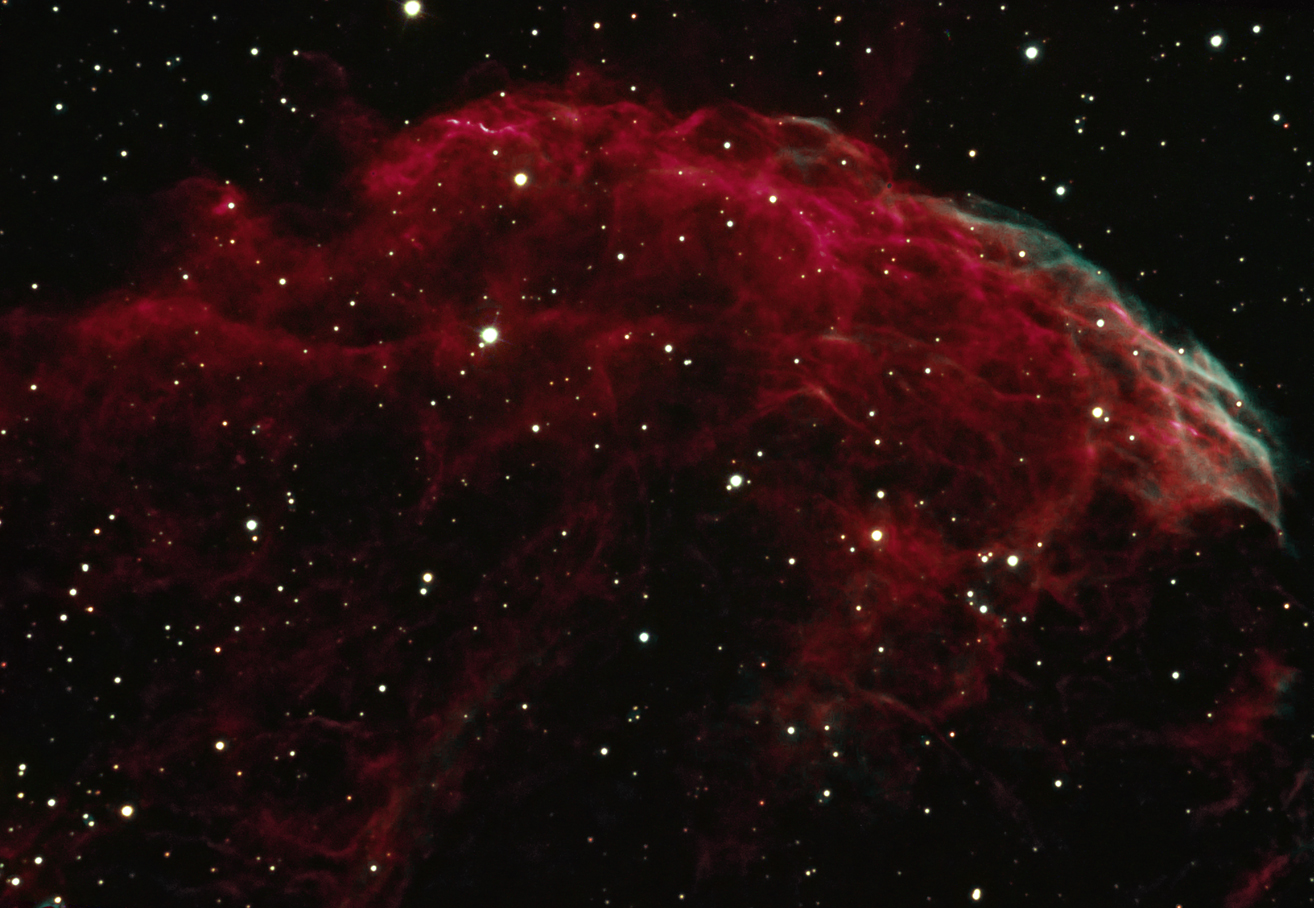
Setup: AstroTech 8" f/8 RC telescope , DF-2 focusser, AO8 guider with MOAG and remote guide head, CFW8, ST10XE (0.86"/pixel), Takahashi EM-200 mount (image)
Acquisition: guiding at 11Hz, 18 hours total exposure time through narrowband H-alpha, SII, OIII filters and broadband R,G,B filters
This is my second serious imaging attempt with the new 8" RC scope. Prior to starting this project I attempted to collimate the scope using CCDInspector (see result here). It might not be perfect yet, but there was definitely improvement.
Imaging was done from a light polluted suburb of Copenhagen sometimes with moon light interfering as well. The integration time for the narrowband subexposures was 1800sec and their stellar FWHM ranged from 2.5-4.7 arcsec.
On this image I tried to follow the method for producing accurate colors from narrowband data as outlined by Debra Ceravolo in Sky & Telescope Dec. 2011. The resulting colors are rich and (I presume) accurate, but the noise could be lower. I think this is due to Debra's use of the lighten' layer blending mode. For me, this seemed the throw away too much data since pixel values are replaced if the color is lighter; instead I would have liked to use layer blending based on addition. However, when I tried the 'linear dodge (add)' blend mode the result was not satisfactory either. My Photoshop skills are not sufficient to do this yet!
I have also made two other images with this data: 1) a Hubble pallette narrowband image with RGB data for the stars. A synthetic luminance layer (the summed H-alpha, OIII, SII data) was placed on top to reduce noise; and 2) the synthetic luminance layer on top of Ceravolos natural color image - kind of a compromise between the first two versions with lower noise and 'somewhat natural' colors. See all three versions HERE!
On this project I did not use deconvolution. I tried, but it didn't work well. I think that the reason is the stacked images are fairly noisy; IC443 is very faint and I worked from a fairly light polluted area. For deconvolution to work well you must really go for *low noise*.
Here's my main page where you can see more of the pictures I have taken so far.
Comments greatly appreciated! (mikael@leif.org)